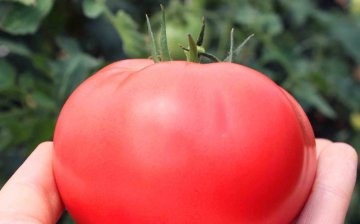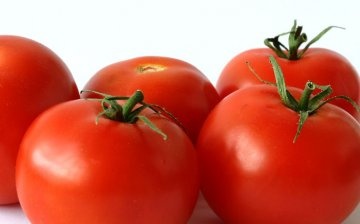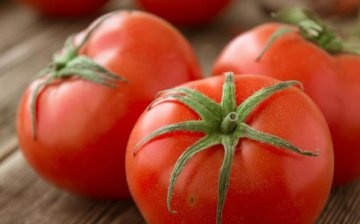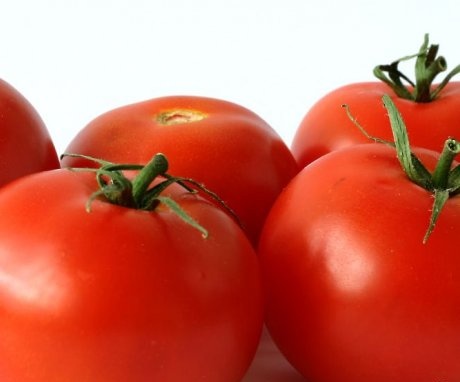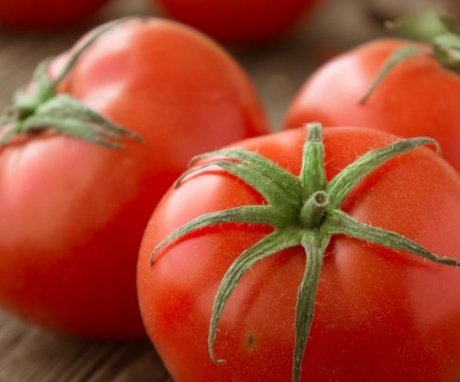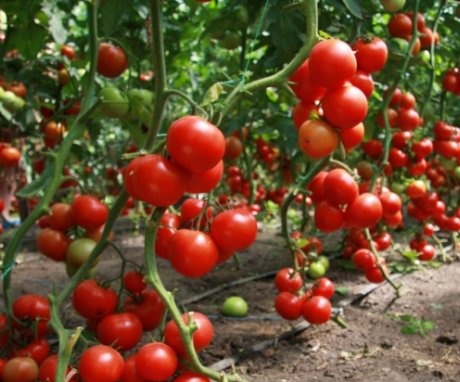The best varieties of dutch tomatoes
A tomato Is one of the main vegetables on the menu. The plant not only pleases with a pleasant taste, but also brings great benefits to the body. Every summer resident, regardless of the region, grows primarily potatoes, cucumbers and tomatoes. Therefore, gardeners are always interested in different varieties and hybrids that would please with a generous harvest and do not cause much trouble when growing.
These requirements are met by hybrids of Dutch selection. They are high yielding and resistant to many common diseases. For this reason, Dutch breeding is in great demand among gardeners.
Content:
- Description of Dutch breeding
- Popular hybrids from Holland
- Features of growing tomatoes
- Hybrid care features
Description of Dutch breeding
The tomato was brought to European soil from distant America. The plant was originally grown as an ornamental plant. Later, the Italians tasted the excellent taste of tomato fruits. They began to add juicy pulp to salads. However, the tomato was officially recognized as an edible vegetable only in the 18th century. By the way, the name "tomato" also appeared thanks to the Italians, despite the fact that the original name of the plant is tomato.
In Holland, the tomato appeared in the 16th century. Breeders went about their good cause, which resulted in the famous line of Dutch hybrids. They have spread all over the world and have gained a good reputation with gardeners.
The main difference between tomatoes from Holland is their resistance to many diseases that can destroy the crop in a short time.
Such ailments include nematodes, fusarium, cancer, spots, verticilliosis, tobacco mosaic and many others. All these misfortunes are not terrible if you grow Dutch breeding hybrids.
It should be noted right away that in the middle lane it is better to grow such tomatoes in greenhouses... This is especially true for the Urals and Siberia. Dutch tomatoes need a warm climate, they may not tolerate sudden frosts, as is often the case in the middle lane. The rest of the plants are unpretentious. In greenhouses, they will feel great and give generous harvests.
Popular hybrids from Holland
Among the many hybrids, gardeners distinguish only a few. They have proven themselves well and have taken root in the harsh conditions of the middle lane. It is customary to divide varieties and hybrids into those that are grown in open and closed ground. But when it comes to Dutch breeding, tomatoes are preferable to grow in greenhouses.
Best Dutch Hybrids (F1):
- Bobcat is an early hybrid designed for indoor and outdoor cultivation. The fruits are large, fleshy and have a pleasant, pronounced tomato flavor. Each tomato can weigh up to 300 g. With proper care, up to five to seven kilograms of harvest are harvested from the bush. Resistant to diseases such as fusarium, verticillosis, alternaria and stemphilium. It tolerates high temperatures well, but can die with a sharp cold snap. The hybrid is of the determinant type.
- President 2 (or II) is an early hybrid intended for cultivation in greenhouses. He has become one of the most beloved hybrids by gardeners, the plant gives generous yields. Fruit weight varies from 300 g to 500 g. Seven or more kilograms are harvested from the bush.The tomato is resistant to fusarium, nematode, mosaic, cancer, various types of spotting. Tomato fruits are ribbed, large and have excellent taste. The plant belongs to the semi-determinant type.
- Crystal - this hybrid is interesting primarily due to the ripening period. The crop can be harvested in a couple of months, while the rest need at least 90 days. Crystal is of the indeterminate type, that is, the gardener will have to do pinching. The hybrid can be grown in a greenhouse and outdoors. Fruit weight is small and reaches 200 g with good care. Up to seven kilograms of harvest can be harvested from a bush. The hybrid has excellent taste. Resistant to cladosporium, tobacco mosaic and verticillium. Does not tolerate temperatures below 15 °.
- Pink Paradise or Pink Paradise - this hybrid is loved by those who are not indifferent to the appearance of the tomato. The fruits are delicate, pink in color. The taste of tomatoes is pronounced tomato, sweet. The plant belongs to the indeterminate type and is grown in greenhouses. Tomatoes ripen within 3-4 months and are of the medium early type. Resistant to fusarium, verticillium, cladosporium, mosaic, nematode and some types of spotting.
- The Punto 7 hybrid is indispensable in the preparation of ketchups and other tomato delicacies.
- Tarpan is another hybrid for lovers of sweet pink tomatoes, early. Tomatoes are grown in greenhouses or open field. Up to six kilograms of harvest can be harvested from a bush. Resistant to all "tomato" ailments. Do not forget that Tarpan is not suitable for harvesting, the tomato is grown as a salad type.
- Big Beef - This hybrid is distinguished by large fruits and high yields. Fruit weight reaches 300 g or more. Tomatoes ripen in 3-4 months and are of the early type. Big Beef is grown in greenhouses or outdoors. Refers to the indeterminate type, that is, the gardener will have to carry out the procedure pinching... The stems of the hybrid must be tied to trellises or stakes. Tomatoes are grown for the preparation of salads; the hybrid is not suitable for harvesting.
Absolutely all hybrids from the Dutch selection tolerate transportation well and are stored for a long time, which is important for those who sell tomatoes. The appearance of the "Dutch" is presentable, the fruits are even, firm, bright red or pink. In greenhouse farms, they prefer to grow hybrids of the Dutch selection. Do not forget that in the northern regions, experiments on growing them are best carried out in greenhouses, even if it is indicated that the plant can also be grown in the open field.
Features of growing tomatoes
Tomatoes from Holland can be cultivated in any usual way - in a greenhouse, in ordinary soil. But many greenhouses prefer the "Dutch method", which differs in many ways from the usual one. First of all, a special substrate is prepared in which the earth is replaced by mineral wool. The ready-made is added to the material fertilizerspecially made for tomatoes. The substrate is placed in containers, in which the plant is grown. Seeds germinate in the sand with vermiculite and fertilizers. That is, the Dutch technique implies the absence of land. This method has proven its effectiveness - up to 65 kg of tomatoes are harvested from one square meter of "soil"!
Outlandish technology is widely used in greenhouses. Gardeners grow tomatoes the old way, in ordinary land. And in this case it is possible to collect a bountiful harvest.
However, one main condition must be observed - maintaining the temperature regime.
Hybrids will delight with large fruits at a soil temperature of at least 15 °, the temperature in the room - at least 20 ° -25 °. If this condition is not met, gentle Dutch hybrids may stagnate. Otherwise, tomatoes do not require special conditions that are alien to domestic varieties.Of course, do not forget that it is better to grow "Dutch" outdoors in the southern regions.
Hybrid care features
If you are going to experiment with Dutch breeding, you should take into account the peculiarities of caring for tomatoes:
- Indeterminate tomato types require pinching and the formation of a bush, otherwise impassable tomato jungle will form very quickly in your greenhouse. As soon as seedling planted in greenhouse soil, do not take your eyes off her and stepchild the plant in time.
- Place trellises or other structures in advance to support tall tomato stems. This is done before planting seedlings in the ground.
- Many hybrids require pollination. Always keep this in mind and open your greenhouse so that bees, bumblebees or wasps can freely enter the room. If this is not possible, pollinate yourself with a brush and fan. To do this, shake the flowers with a brush while the fan is on - pollination will occur automatically. You can also shake the flowers with your hands, the main thing is not to overdo it and not to tear off the flower. Do everything carefully.
- Harvest on time for good tomato development. Please note that the fruits of Dutch hybrids are very large, they must be removed from the bush in a timely manner. As soon as the plant has matured, change the soil mixture to new soil. If this is not possible, plant siderates, for example, mustard. Also treat the soil with a solution made from water and wood ash... The earth will rest and take in nutrients. Dutch hybrids can be grown year-round in a heated greenhouse.
Growing hybrids of Dutch selection, gardeners manage to collect huge yields and successfully implement them without loss. The fruits are perfectly stored, do not deteriorate during transportation and have excellent taste.
More information can be found in the video:



